Results 4,211 to 4,220 of 12096
Thread: Anandtech News
-
08-18-14, 07:30 PM #4211
Anandtech: EVGA Torq X10 Gaming Mouse Review
EVGA recently sent us their new Torq X10, a gaming mouse that also marks EVGA's first foray into the gaming peripheral market. On paper, it boasts excellent features and specifications. We are going to find out if it can live up to the high expectations of both the company and the consumers in this review.
More...
-
08-18-14, 08:30 PM #4212
Anandtech: ARM's Cortex M: Even Smaller and Lower Power CPU Cores
ARM (and its partners) were arguably one of the major causes of the present day smartphone revolution. While AMD and Intel focused on using Moore’s Law to drive higher and higher performing CPUs, ARM and its partners used the same physics to drive integration and lower power. The result was ultimately the ARM11 and Cortex A-series CPU cores that began the revolution and continue to power many smartphones today. With hopes of history repeating itself, ARM is just as focused on building an even smaller, even lower power family of CPU cores under the Cortex M brand.
We’ve talked about ARM’s three major families of CPU cores before: Cortex A (applications processors), Cortex R (real-time processors) and Cortex M (embedded/microcontrollers). Although Cortex A is what we mostly talk about, Cortex M is becoming increasingly important as compute is added to more types of devices.
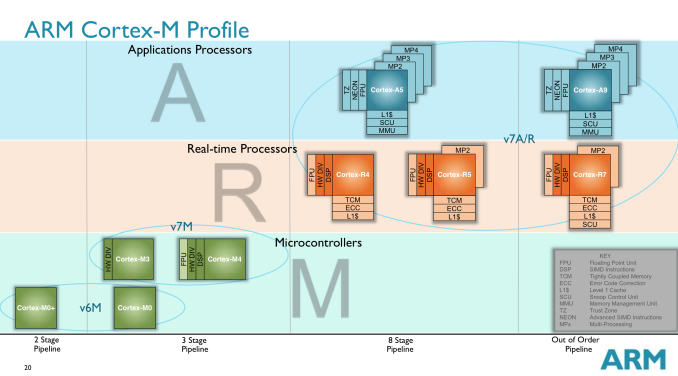
Wearables are an obvious fit for Cortex M, yet the initial launch of Android Wear devices bucked the trend and implemented Cortex A based SoCs. A big part of that is likely due to the fact that the initial market for an Android Wear device is limited, and thus a custom designed SoC is tough to justify from a financial standpoint. Looking a bit earlier in wearable history and you’ll find a good number of Cortex M based designs including the FitBit Force and the Pebble Steel. I figured it’s time to put the Cortex M’s architecture, performance and die area in perspective.
We’re very much in the early days of the evolution of Cortex M. The family itself has five very small members: M0, M0+, M1, M3 and M4. For the purposes of this article we’ll be focusing on everything but Cortex M1. The M1 is quite similar to the M0 but focuses more on FPGA designs.
Before we get too far down the architecture rabbit hole it’s important to provide some perspective. At a tech day earlier this year, ARM presented this data showing Cortex M die area:
By comparison, a 40nm Cortex A9 core would be roughly around 2.5mm^2 range or a single core. ARM originally claimed the Cortex A7 would be around 1/3 - 1/2 of the area of a Cortex A8, and the Cortex A9 is roughly equivalent to the Cortex A8 in terms of die area, putting a Cortex A7 at 0.83mm^2 - 1.25mm^2. In any case, with Cortex M we’re talking about an order of magnitude smaller CPU core sizes.
The Cortex M0 in particular is small enough that SoC designers may end up sprinkling in multiple M0 cores in case they need the functionality later on. With the Cortex M0+ we’re talking about less than a hundredth of a square millimeter in die area, even the tightest budgets can afford a few of these cores.
In fact, entire SoCs based on Cortex M CPU cores can be the size of a single Cortex A core. ARM provided this shot of a Freescale Cortex M0+ design in the dimple of a golf ball:
ARM wouldn’t provide me with comparative power metrics for Cortex M vs. Cortex A series parts, but we do have a general idea about performance:
In terms of DMIPS/MHz, Cortex M parts can actually approach some pretty decent numbers. A Cortex M4 can offer similar DMIPS/MHz to an ARM11 (an admittedly poor indicator of overall performance). The real performance differences come into play when you look at shipping frequencies, as well as the type of memory interface built around the CPU. Cortex M designs tend to be largely SRAM and NAND based, with no actual DRAM. You'll note that the M3/M4 per clock performance is identical, that's because the bulk of what the M4 adds is in the form of other hardware instructions not measured by Dhrystone performance.Estimated Core Performance ARM Cortex M0/M0+ ARM Cortex M3/M4 ARM11 ARM Cortex A7 ARM Cortex A9 Qualcomm Krait 200 DMIPS/MHz 0.84/0.94 1.25 1.25 1.9 2.5 3.3
ARM wouldn’t provide me with comparative power metrics for Cortex M vs. Cortex A series parts, but we do Instruction set compatibility varies depending on the Cortex M model we’re talking about. The M0 and M0+ both implement ARM’s v6-M instruction profile, while the M3 and M4 support ARM’s v7-M. As you go up the family in terms of performance you get access to more instructions (M3 adds hardware divide, M4 adds DSP and FP instructions):
Each Cortex M chip offers a superset of the previous model’s instructions. So a Cortex M3 should theoretically be able to execute code for a Cortex M0+ (but not necessarily vice versa).
You also get support for more interrupts the higher up you go on the Cortex M ladder. The Cortex M0/M0+ designs support up to 32 interrupts, but if you move up to the M3/M4 you get up to 240.
All Cortex M processors have 32-bit memory addressability and the exact same memory map across all designs. ARM’s goal with these chips is to make moving up between designs as painless as possible.
While we’ve spent the past few years moving to out-of-order designs in smartphone CPUs, the entire Cortex M family is made up of very simple, in-order architectures. The pipelines themselves are similarly simplified:
Cortex M0, M3 and M4 all feature 3-stage in-order pipelines, while the M0+ shaves off a stage of the design. In the 3-stage designs there’s an instruction fetch, instruction decode and a single instruction execute stage. In the event the decoder encounters a branch instruction, there’s a speculative instruction fetch that grabs the instruction at the branch target. This way regardless of whether or not the branch is taken, the next instruction is waiting with at most a 1 cycle delay.
These aren’t superscalar designs, there’s only a 1-wide path for instruction flow down the pipeline and not many execution units to exploit. The Cortex M3 and M4 add some more sophisticated units (hardware integer divide in M3, MAC and limited SIMD in M4), but by and large these are simple cores for simple needs.
The range of operating frequencies for these cores is relatively low. ARM typically expects to see Cortex M designs in the 20 - 150MHz range, but the cores are capable of scaling as high as 800MHz (or more) depending on process node. There’s a corresponding increase in power consumption as well, which is why we normally see lower clocked Cortex M designs.
Similar to the Cortex A and R lines, the Cortex M family has a roadmap ahead of it. ARM recently announced a new CPU design center in Taiwan, where Cortex M based cores will be designed. I view the Cortex M line today quite similarly to the early days of the Cortex A family. There’s likely room for a higher performing option in between Cortex M4 and Cortex A7. If/when we get such a thing I feel like we may see the CPU building block necessary for higher performance wearable computing.
More...
-
08-18-14, 11:30 PM #4213
Anandtech: AMD Jumps Into the SSD Market: Radeon R7 Series SSD Launched
Back in 2011, AMD made a rather unexpected move and expanded its Radeon brand to include memory in addition to graphics cards. With today's announcement AMD is adding another member to its Radeon family by releasing Radeon R7 Series SSDs. Similar to AMD memory, AMD is not actually designing or manufacturing the SSDs as the product design and manufacturing is handled by OCZ. In fact, all the customer support is also handled by OCZ, so aside from the AMD logo AMD is not really involved in the product.
Partnering with OCZ makes sense because OCZ's focus with the Barefoot 3 platform has always been gamers and enthusiasts and that is the target group for AMD's R7 SSDs as well. OCZ is a now owned by Toshiba, so OCZ has direct access to NAND with guaranteed supply, whereas fabless OEMs (e.g. Kingston) could face supply issues that might harm AMD. Here's the quick overview, which of course will be essentially the same as certain existing Barefoot 3 products.
The R7 is based on OCZ's own Barefoot 3 controller and it is the same higher clocked M00 version (397MHz) as in the Vector 150. The new ARC 100 and Vertex 460 use the M10 version, which runs at 352MHz instead of 397MHz but is otherwise the same silicon. Performance wise the R7 SSD is very close to Vector 150 with slightly lower random write performance, although random read performance is marginally better in turn.AMD Radeon R7 Series SSD Specifications Capacity 120GB 240GB 480GB Controller OCZ Barefoot 3 M00 NAND Toshiba A19nm MLC Sequential Read 550MB/s 550MB/s 550MB/s Sequential Write 470MB/s 530MB/s 530MB/s 4KB Random Read 85K IOPS 95K IOPS 100K IOPS 4KB Random Write 90K IOPS 90K IOPS 90K IOPS Steady-State 4KB Random Write 12K IOPS 20K IOPS 23K IOPS Idle Power 0.6W 0.6W 0.6W Max Power 2.7W 2.7W 2.7W Encryption AES-256 Endurance 30GB/day for 4 years Warranty Four years MSRP $100 $164 $299
The biggest difference between the two is endurance as the Vector 150 is rated at 50GB per day for five years (91TB total) while the R7 is rated at 30GB per day for four years (43TB total). The firmware in the R7 is tailored for AMD, although I was told that the customizations are mainly wear-leveling related to increase endurance over the Vertex 460, so there should not be any surprises in performance. The NAND is also different as the R7 utilizes Toshiba's A19nm MLC, but OCZ should be making the switch to A19nm across its whole client SSD lineup soon to cut costs.
The motivation behind AMD's move is identical to the reason AMD entered the memory market. AMD wants to provide users an "AMD-only" experience by offering as many of the components as possible. Another argument AMD had is that providing more AMD branded products makes it easier for novice PC builders to pick the parts because the buyer does not have to go through the trouble of deciding between dozens of products and making sure the parts are compatible with each other. In addition to providing an easier purchase experience, AMD can also use the R7 SSDs in bundles and promotions, which is definitely more lucrative than using third party components.
Of course, the ultimate reason behind the move is that SSDs are becoming a mainstream product, and they provide another revenue source for AMD. AMD has not been doing that great financially lately and having an extra low risk revenue source is definitely welcome, even though client SSDs are not exactly a high profit market anymore. Then again, AMD is not investing much into SSDs since development and manufacturing is done by OCZ, so even if Radeon R7 SSD sales end up being low, AMD has no long-term investment to protect. The announced pricing is generally in line with what we're seeing for the existing OCZ Vector 150 products, though mail-in rebates can actually drop the Vector 150 below Radeon R7 SSD levels.
All in all, the R7 will not provide much from a technological standpoint since it uses the same platform we have tested several times, but it will be interesting to see how AMD bundles the R7 with other AMD products. AMD now has an opportunity to provide even more extensive bundles (CPU/APU, GPU, RAM and SSD); all that's left is for AMD to begin offering Radeon branded motherboards, power supplies, and cases to provide the ultimate AMD-only experience. Whether that happens remains to be seen, but AMD is trying an aggressive bundling strategy to increase their desktop CPU sales.
We have samples of the Radeon R7 SSD on the way, so stay tuned for the full review!
More...
-
08-19-14, 03:46 AM #4214
Anandtech: ECS Announces Z97-PK: A Motherboard with ‘One Key OC’ 4.7 GHz for Pentium
With the launch of the overclockable Pentium G3258 processor, some motherboard manufacturers have been scrambling to get a cheaper product to market to be the centre point of a Pentium based build. We covered ASRock’s Z97 Anniversary launch and have an upcoming review of an $110 MSI motherboard aimed at the same market, but today ECS is announcing its Z97-PK (PK = Pentium K ?, even though Intel call it the Pentium AE). The main stand out feature of the motherboard is the ‘One Key OC’, which claims to boost the G3258 from 3.2 GHz to 4.7 GHz.
This an impressive claim, given the motherboard relies on a 2-3-phase power implementation with no power delivery heatsink – I would assume that ECS has performed enough testing on enough CPUs to make sure the 4.7 GHz value covers the majority of G3258 dies. Even though ECS lists a ‘One Key OC’ for this functionality, there is no actual physical button on board (like with MSI’s OC Genie), which makes me believe that this is either a software or a BIOS implementation. Ultimately I would have preferred a physical button due to the low number of home users who actually enter the BIOS or install the bundled software.
The motherboard is in the mATX form factor, offering a single PCIe 3.0 x16 slot for graphics with a PCIe 2.0 x4 slot from the chipset. This means there is no SLI support but Crossfire is available at a reduced bandwidth for the second card. Like other lower cost motherboards there are six SATA 6 Gbps ports, with this layout affording two at right angles to the motherboard and four coming out of the PCB. There are only four USB 3.0 ports, with two of these coming from an internal header. Also of note is the DRAM slots which are not equidistant from each other; this could reduce signalling margins for overclocked memory unless ECS have engineered the board to compensate. That being said, the webpage only lists DDR3-1600 memory support.
Audio and networking is provided by Realtek, and integrated video outputs come via the VGA, DVI-D and HDMI outputs. This is interesting when comparing to the Z97 Guard-Pro, which uses VGA, DVI-D and DisplayPort instead to allow tri-monitor setups. Also on the motherboard for legacy connectors are a COM header, an LPT header and a TPM header.
The ECS Z97-PK might not win any aesthetic awards, but ECS usually aims at the super low pricing bracket which might pique some interest in mass production builds. We are awaiting information about release dates and pricing, although ECS is claiming that this motherboard and the G3258 in a bundle would cost less than an i5 processor by itself. The only downside with that comparison is that as our review and analysis showed, the i5 performs significantly better than an overclocked G3258 in multi-threaded tasks and multi-GPU gaming.
Source: ECS
More...
-
08-19-14, 05:36 AM #4215
Anandtech: State of the Part: SoC Manufacturers
Introduction
A few years ago, it seemed a new System-On-Chip (SoC) design using an ARM-based architecture would pop up every other week. While competition can be great, with so many of the designs offering similar core features and the need to provide support for the products, over time the major players in the ARM SoC market have shifted and consolidated (e.g. Texas Instruments has exited the Application Processor space). There are still plenty of companies that ship SoCs, but some of these are lower end offerings that can't really compete except on price, leaving us with a few major players.
Depending on whom you wish to include/exclude, there are anywhere from four to eight SoC manufacturers still in the game, with three of them mostly catering to the budget sector. We could also include ARM as a company, but since they don't really manufacture any parts we'll leave that for a separate article.
Before we get to the manufacturers, let's quickly go over the pertinent items to know for any SoC. The main functionality of any SoC is going to come from the CPU cores, where modern designs typically use either two or four cores, with some offerings including up to eight cores -- four lower power cores that offer better battery life with four higher performance cores for when there's work to be done. Next to the CPU cores in importance is the GPU, the graphics processor, and again you can find SoCs with multiple GPU "cores" combined to improve graphics performance (e.g. MP1 for one core, MP2 for two, and so on). Finally, it's useful to know the manufacturing process for an SoC, as lower numbers generally mean smaller, more power efficient chips. We've had variations of 28nm manufacturing for a few years now, with the state-of-the-art next generation SoCs now moving to 20nm for most companies.
Ultimately, what it comes down to is the end user experience, which is a very broad topic and out of the scope of this article. The pace of technology in smartphones and tablets has been pretty brisk, however, so anything more than a year old can end up feeling quite sluggish, and after two years most users are ready for an upgrade. Most of the top SoCs right now are 28nm designs with at least two CPU cores, but not all cores are created equal, so this is another topic we'll address in a future piece.
The general idea is that if you're like most people and live on the two-year upgrade cycle for smartphones, the best time to upgrade is usually right after a major technology advance. Roughly two years ago we started seeing the first ARM Cortex-A15 designs along with Apple's competing A6 "Swift" architecture, and while there are faster devices today the smartphones and tablets using those chips are still able to deliver a decent user experience. We're now on the brink of the next generation of SoCs, thanks to the shift to the 20nm manufacturing process along with ARM's new 64-bit Cortex-A53 and Cortex-A57 designs, so if you've been holding off upgrading the next few months should prove very enticing. Of course we'll still have to wait for early 2015 before many of the devices using the new SoCs are available for purchase.
Without going into too much detail, here's the short list of significant SoC manufacturers, with a brief discussion of their current and upcoming parts. In the near future we'll have separate articles going into more detail on the various models and technology for each company, as well as some recommendations in terms of performance and the overall user experience. This is intended as a short high-level overview of the companies to get us started.
Qualcomm
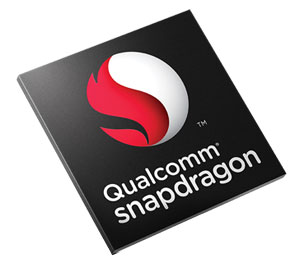 Qualcomm is one of the biggest players in the SoC market, and their designs are in many of the leading Android devices. All of the current Qualcomm SoCs are sold under the Snapdragon brand, and there are multiple performance segments (i.e. the Snapdragon 200, 400, 600, and 800 series). Qualcomm has had several custom-designed ARM architectures, with the latest being Krait (with multiple variations of Krait as well). Most of the lower tier parts are dual-core Krait designs with the higher-end 600 and 800 series being quad-core Krait offerings. Their current halo parts are in the 800 family, with the 800, 801, and 805 all presently shipping, but even within the same model number there are multiple configurations available (e.g. with or without cellular baseband options).
Qualcomm is one of the biggest players in the SoC market, and their designs are in many of the leading Android devices. All of the current Qualcomm SoCs are sold under the Snapdragon brand, and there are multiple performance segments (i.e. the Snapdragon 200, 400, 600, and 800 series). Qualcomm has had several custom-designed ARM architectures, with the latest being Krait (with multiple variations of Krait as well). Most of the lower tier parts are dual-core Krait designs with the higher-end 600 and 800 series being quad-core Krait offerings. Their current halo parts are in the 800 family, with the 800, 801, and 805 all presently shipping, but even within the same model number there are multiple configurations available (e.g. with or without cellular baseband options).
The existing parts use either a 28nm LP or 28nm HPm process, but more recently Qualcomm has announced the Snapdragon 808 and 810, which move to a 20nm HPm process and use ARM's Cortex-A57/A53 64-bit cores in a 2+4/4+4 configuration, with Adreno 418/430 graphics. The shrink in process technology is something we should see from all of the major players in the coming months, with the benefits being potentially lower power and/or higher performance coupled with smaller chip sizes.
In the near term, Qualcomm also has their new 410 and 610 Snapdragon parts that will be their first 64-bit SoCs. The 410 is already in shipping devices in certain markets, and the 610 should show up in Q4'2014 devices. Meanwhile, the 810 should start shipping in devices in the first half of 2015 and will be the halo product from Qualcomm, with 808 following shortly after. Qualcomm has not yet announced a custom designed 64-bit architecture, but that will likely come later in 2015.
Apple
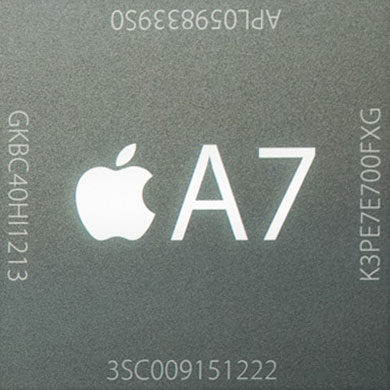 Apple is next in the list, though really the top two positions are hotly contended and many would place them first. Either way, Apple needs little in the way of introduction. Largely responsible for the new paradigm in touchscreen smartphones thanks to their iPhone, the performance of Apple's devices has continued to increase at a rapid pace. Apple also has the advantage of running their own software with iOS, which potentially gives them an advantage over other companies that utilize Android. While earlier iPhones used designs largely built by other companies, Apple began designing their own ARMv7 architecture with the A6 in 2012.
Apple is next in the list, though really the top two positions are hotly contended and many would place them first. Either way, Apple needs little in the way of introduction. Largely responsible for the new paradigm in touchscreen smartphones thanks to their iPhone, the performance of Apple's devices has continued to increase at a rapid pace. Apple also has the advantage of running their own software with iOS, which potentially gives them an advantage over other companies that utilize Android. While earlier iPhones used designs largely built by other companies, Apple began designing their own ARMv7 architecture with the A6 in 2012.
The latest generation A7 SoC was introduced about a year ago with the iPhone 5S in September 2013 and has since found its way into the iPad Mini Retina and iPad Air. The A7 features a dual-core 1.3-1.4GHz Apple-designed processor codenamed Cyclone, running the ARMv8 instruction set, making it the first shipping 64-bit SoC. Short-term that may not be a huge deal, but long-term it paves the way for future devices. We believe the GPU in the A7 is a PowerVR G6430 200MHz GPU (four cluster MP4 configuration). The A7 is manufactured on Samsung's 28nm process and uses 1GB of memory.
Given Apple's history, we can expect some sort of update at the next iPhone event, rumored to be on September 9. Most think the next Apple chip will be called the A8 and will likely move to a 20nm process technology, allowing for a generational leap in performance. We might finally see an iOS device with 2GB RAM.
Samsung
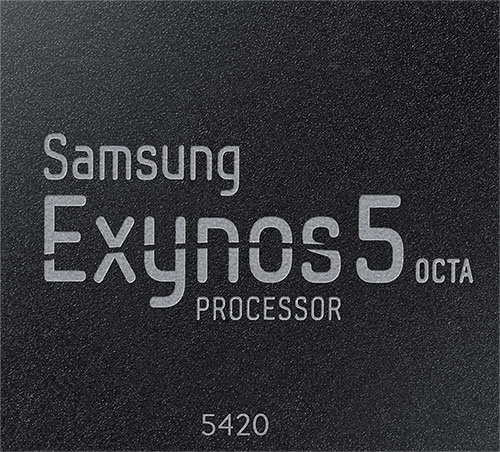 In terms of volume if not performance, Samsung comes next in our hierarchy, and they've long been a player in the SoC market, going back as far as the early 2000s with some of their chips; they were also the SoC provider for the original iPhone in 2007. Samsung has numerous smartphones and tablets available, and while many use Samsung SoCs there are also Qualcomm SoCs in some models. Their current SoC designs belong to the Exynos family, which has been around since 2011.
In terms of volume if not performance, Samsung comes next in our hierarchy, and they've long been a player in the SoC market, going back as far as the early 2000s with some of their chips; they were also the SoC provider for the original iPhone in 2007. Samsung has numerous smartphones and tablets available, and while many use Samsung SoCs there are also Qualcomm SoCs in some models. Their current SoC designs belong to the Exynos family, which has been around since 2011.
The top performance Exynos SoC right now is the 5800, also called the Exynos 5 Octa, a 4+4 big.LITTLE implementation with four faster Cortex-A15 cores and four slower but more power efficient Cortex-A7 cores, paired with a Mali-T628 GPU. The Exynos 5 Octa (and Hexa if we include the 5260) use Samsung's 28nm HKMG process, but there's a new Exynos 5430 (used in certain models of the upcoming Samsung Galaxy Alpha) that has a similar configuration and uses a new 20nm HKMG process. We'll likely see more 20nm Samsung SoCs in the coming months, and with most companies shifting to the new 64-bit Cortex-A57/A53 we can expect Samsung to do the same.
NVIDIA
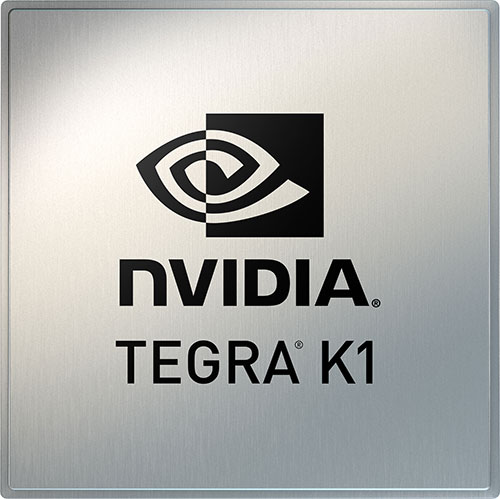 NVIDIA is a familiar name for PC enthusiasts, and they're sort of the reverse of Samsung right now: higher performance but lower volumes shipped. Given the growing popularity of tablets and smartphones, there's little surprise that NVIDIA is also working to gain (and maintain) a foothold in the mobile sector. Their latest SoC is the Tegra K1, found in the SHIELD Tablet and Acer's new Chromebook.
NVIDIA is a familiar name for PC enthusiasts, and they're sort of the reverse of Samsung right now: higher performance but lower volumes shipped. Given the growing popularity of tablets and smartphones, there's little surprise that NVIDIA is also working to gain (and maintain) a foothold in the mobile sector. Their latest SoC is the Tegra K1, found in the SHIELD Tablet and Acer's new Chromebook.
Tegra K1 pairs a 192-core Kepler-derived GPU with one of two CPU options. The first is a quad-core Cortex-A15 R3 design that's similar to the processor used in the Tegra 4, while an upcoming variant of the K1 will use a dual-core 64-bit Denver CPU designed by NVIDIA. Considering the most successful ARM SoCs are going the custom-logic route (e.g. Apple's Cyclone and Qualcomm's Krait are custom designs that use the ARMv8 and ARMv7 instruction sets rather than simply using Cortex-A15), NVIDIA hopes to improve performance while reducing power, among other things.
While the shipping K1 uses four A15 cores and is manufactured on a 28nm process, the Denver version could move to 20nm, but NVIDIA hasn't officially announced the process for the Denver K1. The Tegra K1 is currently one of the fastest (if not the fastest) shipping SoCs, but many of the next generation SoCs have not yet launched so this could very well change in the next month or two. Looking forward, the successor to the Tegra K1 is currently codenamed Erista and is expected to pair a Maxwell-based GPU with Denver CPU cores, but that part won't begin production until some time in 2015 so it's a ways off.
Intel
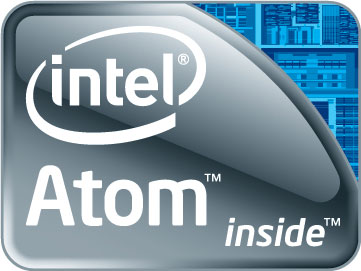 The final major player in terms of higher performance SoCs is Intel, another company that needs little introduction. Unlike everyone else on this list of SoC manufacturers, Intel is using their own custom architecture running the x86 instruction set instead of ARMv7 or ARMv8. Where x86 has proven to be a juggernaut in the PC space, in the mobile world where every device gets a customized software build it has not been nearly as useful – and some might even call it a handicap, though these days the difficulty of decoding x86 is relatively small. Intel has been trying to stake a claim in the mobile sector, and after a few initial forays that didn't accomplish much, their latest Atom SoCs have seen a moderate amount of use.
The final major player in terms of higher performance SoCs is Intel, another company that needs little introduction. Unlike everyone else on this list of SoC manufacturers, Intel is using their own custom architecture running the x86 instruction set instead of ARMv7 or ARMv8. Where x86 has proven to be a juggernaut in the PC space, in the mobile world where every device gets a customized software build it has not been nearly as useful – and some might even call it a handicap, though these days the difficulty of decoding x86 is relatively small. Intel has been trying to stake a claim in the mobile sector, and after a few initial forays that didn't accomplish much, their latest Atom SoCs have seen a moderate amount of use.
The currently shipping Atom SoCs are 22nm devices, codenamed Bay Trail. You can find them in NAS and other products, but we're mostly concerned with the tablet and smartphone spaces for this overview. The Merrifield and Moorefield platforms (Atom Z34xx/Z35xx) remain at 22nm and use the same core Silvermont CPU cores as Bay Trail, except with PowerVR 6 G6400/G6430 graphics.
Looking to the future, the platform that may finally give Intel a real leg up on the competition likely won't come out until early to mid 2015. That's the Cherry Trail platform, which will upgrade the CPU cores to Airmont and move to Intel's 14nm process, delivering better performance in a lower power package. We've been saying "wait for the next Atom update" for a while, but on paper at least Cherry Trail looks very promising – it's the first Atom to ship on Intel's latest process technology without waiting a year or more, and it's the second Atom design after Intel's commitment to begin updating the Atom platform on a yearly basis.
MediaTek
Moving over to the budget players, there are at least two that warrant mentioning. MediaTek has been around for a while now, though like most SoC companies they didn't really get into the ARM and Android space until 2009/2010. Starting in 2013, however, MediaTek managed a ton of design wins…but all of the wins are almost exclusively in lower performance, second tier parts. In terms of strict volume, MediaTek likely ships as many SoCs as the biggest companies, and they are a major provider of SoCs in China. Not surprisingly, MediaTek devices tend to be budget friendly products, though that often means compromises in other areas as well.
Their current top-tier SoCs use quad-core Cortex-A7 designs with Mali-400 MP2 graphics. While such specifications would have looked really good back in 2011, they're clearly not performance competitive with the top SoCs today. MediaTek does have the MT6732 part that has a quad-core Cortex-A53 CPU with Mali-T760 graphics, and while the A53 is the 64-bit equivalent of the A7 where the A57 is the higher performance 64-bit part, A53 could end up delivering a nice blend of performance and efficiency.
Allwinner
Allwinner Technology has many similarities to MediaTek. They've been around since 2007 but their earlier products were largely forgettable. In 2011 they became an official ARM licensee, and since then they've gained some popularity as a budget SoC provider. Their latest products include the quad-core Cortex-A7 based A33, which runs at up to 1.5GHz and includes a Mali 400 MP2 GPU. The A33 is marketed as "the first $4 quad-core tablet processor", and you can often find this SoC in sub-$100 tablets; performance as you might expect largely follows pricing, but like MediaTek they can still do a huge volume thanks to their cost advantage.
Their fastest announced product is the new A80 SoC, which features an octal-core big.LITTLE configurations (four Cortex-A7 and four Cortex-A15 cores) with a PowerVR G6230 GPU. It's currently shipping in China in the Onda V989, a $200 tablet with a 9.7" 2048x1536 display. It's not clear what manufacturing process is used on the A33 and A80, but 28nm seems likely considering the target market.
Closing Comments
There are other SoC vendors we could mention as well. RockChip is right there with Allwinner and MediaTek vying for market share in budget products, for example. They even have an announced quad-core Cortex-A17 part with Mali-T760 GPU, which should provide decent performance, but it's not clear when that part will actually show up in shipping devices. Let's also not forget their strategic agreement with Intel, which is interesting to say the least. We could also include AMD with their Mullins APU from the PUMA family, which like Intel uses an x86 CPU core designed in-house by AMD. AMD is also an ARM licensee, and they might look to bring alternative SoCs to market using ARM instructions sets instead of x86.
The remaining players are small enough that it's difficult for them to compete with the bigger names. After all, if you're just licensing the same core architectures for the CPU and GPU as everyone else, you can't really offer better performance; all you can do is compete on price. Sometimes that's enough, but the real news in the SoC space is likely going to come from the companies doing their own custom logic.
If we group all the companies shipping vanilla ARM designs under ARM (e.g. MediaTek, Allwinner, RockChip, and even Samsung), that still leaves us with Qualcomm, Apple, NVIDIA, and Intel doing custom logic. It's difficult to imagine any of those companies bowing out right now, and Samsung is a big player as well, which means we'll likely continue to see the "Big Five" SoC companies duking it out in the smartphone and tablet sectors. And while they continue nipping at the market share in the PC laptop/desktop space, they still have to worry about giving up ground to even more budget friendly devices from the likes of MediaTek and Allwinner.
More...
-
08-19-14, 07:31 AM #4216
Anandtech: SanDisk Releases Ultra II SSD: Bringing More TLC NAND to the Market
It is a busy day in the client SSD space as earlier today AMD announced the company's first SSD, the R7, and now SanDisk is releasing the Ultra II to the mainstream market. The Ultra II is based on SanDisk's second generation 19nm TLC NAND, which means that the Ultra II is the first non-Samsung SSD to ship with TLC NAND. We have covered TLC NAND several times already, but in short TLC NAND provides lower cost at the cost of performance and endurance, making it a feasible option for value drives.
Similar to SanDisk's other client drives, the Ultra II is based on the Marvell 88SS9187 platform. SanDisk's expertise lies in the firmware development and NAND know-how, which has generally given them an advantage over other Marvell based solutions.
Unfortunately I do not have the full spec sheet yet, so I have to go by the limited details listed in the press release, but I will be updating the table with more specs as soon as I get them. The Ultra II utilizes SanDisk's nCache 2.0 technology, which operates a portion of the NAND in SLC mode to increase performance and improve reliability. As a result, the Ultra II is able to achieve write speeds of up to 500MB/s even at the lowest capacity, although it should be kept in mind that this is peak performance -- as soon as the SLC buffer is full write speeds will drop quite dramatically.SanDisk Ultra II Specifications 120GB 240GB 480GB 960GB Controller Marvell 88SS9187 NAND SanDisk 2nd Gen 19nm TLC Sequential Read Up to 550MB/s Sequential Write Up to 500MB/s Warranty Three years Price $80 $115 $220 $430
SanDisk is also bringing a new version of its SSD Dashboard along with the Ultra II. The new version features support for 17 difference languages and includes "Live Chat" in case the user has any questions about the Dashboard or SSD. Additionally, SanDisk is including cloning and antivirus features via third party software (Apricorn's EZ GIG IV for cloning, Trend Micro Titanium Antivirus+ for malware) with the goal of helping users to transition from a hard drive to an SSD. Combining antivirus with the SSD Dashboard might seem a bit odd but it actually makes sense. When you are about to clone your Windows install to a new SSD, the first thing you should do is a run an antivirus scan to make sure that no malware will be transferred through cloning because malware can ruin the faster user experience that an SSD provides.
Samsung certainly set the bar high with the SSD 840 and 840 EVO, so it will be interesting to see how SanDisk can match that. Pricing is very competitive with the 840 EVO and Crucial MX100, so as long as SanDisk has been able master the firmware for TLC the Ultra II should a viable option for value oriented consumers. The Ultra II will be available next month and we are scheduled to get review samples within the next couple of weeks, so stay tuned for the full review!
More...
-
08-19-14, 10:02 AM #4217
Anandtech: HTC Announces the HTC One (M8) for Windows
It's been a while since we've seen a high-end device running Windows Phone 8 launch from a company other than Nokia. Despite Nokia's dominance, HTC has certainly not given up on the platform and today they're demonstrating that with the launch of a new flagship Windows Phone 8 device that you may already know very well. This new device is named the HTC One (M8) for Windows, and both its design and its hardware are essentially the same as the Android powered HTC One M8 that HTC launched earlier this year. We've laid out the specifications of the One (M8) for Windows below.
[TR="class: tgrey"]
[TD="colspan: 7, align: center"] HTC One (M8) for Windows[/TD]
[/TR]
[TR]
[TD="class: tlgrey"] SoC[/TD]
[TD="align: center"] Qualcomm Snapdragon 801 (MSM8974ABv3) 4 x Krait 400 at 2.26GHz
Adreno 330 at 578 MHz[/TD]
[/TR]
[TR]
[TD="class: tlgrey"] Memory and Storage[/TD]
[TD="align: center"] 2GB LPDDR3, 16/32GB NAND + microSDXC[/TD]
[/TR]
[TR]
[TD="class: tlgrey"] Display[/TD]
[TD="align: center"] 5” 1920x1080 Super LCD3 at 441 ppi[/TD]
[/TR]
[TR]
[TD="class: tlgrey"] Cellular Connectivity[/TD]
[TD="align: center"] 2G / 3G / 4G LTE (Qualcomm MDM9x25 UE Category 4 LTE)[/TD]
[/TR]
[TR]
[TD="class: tlgrey"] Dimensions[/TD]
[TD="align: center"] 146.36 x 70.6 x 9.35mm max, 160 grams[/TD]
[/TR]
[TD="class: tlgrey"] Camera[/TD]
4.0 MP (2688
More...
-
08-19-14, 05:30 PM #4218
Anandtech: Zalman Reserator 3 Max Dual CPU Cooler Review
Zalman sent us their Reserator 3 Max Dual CPU cooler, which is a rather interesting device. It's an all-in-one liquid cooling solution that Zalman advertises as the "Ultimate Liquid CPU Cooler". Zalman's engineers are certainly no amateurs when it comes to liquid cooling and the Reserator 3 Max Dual does appear unique, but is it really an "Ultimate Cooler"? We are going to find out in today's review.
More...
-
08-20-14, 05:46 AM #4219
Anandtech: MSI Z97 Guard-Pro Review: Entry Level Z97 at $110
Next in our recent run of lower cost motherboards is the MSI Z97 Guard-Pro, a motherboard that MSI billed to me as one suited for the overclockable Pentium G3258 on a budget. At $110, we see if it differs much from the more expensive options on the market.
More...
-
08-20-14, 12:30 PM #4220
Anandtech: FMS 2014: Silicon Motion Showcases SM2256 SSD Controller with TLC NAND Sup
A couple of weeks ago at Flash Memory Summit, Silicon Motion launched their next generation SATA 6Gbps SSD controller. Dubbed simply as SM2256, the new controller is the first merchant controller solution (hardware + firmware) to support TLC NAND out of the box and succeeds the SM2246 controller we tested a while ago with ADATA's Premier SP610. The SM2246 was not the fastest solution in the market but it provided decent performance at an alluring price and the SM2256 is set to lower the total cost even more thanks to support for lower cost TLC NAND.
The SM2256 continues to be a 4-channel design and I am guessing it is also based on the same single-core ARC design with most changes being in the ECC engine. NAND support includes all NAND that is currently available including Toshiba's 15nm TLC NAND and the controller is designed to support 3D NAND as well. DDR3 and DDR3L are supported for cache and the controller is also TCG Opal 1.0 compliant.
To make TLC durable enough, the SM2256 features Low Density Parity Check (LDPC) error-correction, which is a new ECC scheme that is set to replace BCH ECC. Intel did a very detailed presentation on LDPC at FMS a dew years ago, although I must warn you that it is also very technical with lots of math involved. Silicon Motion calls its implementation NANDXtend and it has three steps: LDPC hard decode, soft decode and RAID data recovery. Basically, hard decode is much faster than soft decode because there is less computation involved and in case the ECC engine fails to correct a bit, the RAID data recover kicks in and the data is recovered from parity. Silicon Motion claims that its NANDXtend technology can triple the endurance of TLC NAND, making it good for ~1,500-3000 P/E cycles depending on the quality of the NAND. Marvell's upcoming 88SS1074 controller supports LDPC as well and I will be taking a deeper look at the technology once we have a sample in our hands.
TLC is expected to become the dominant NAND type in four years, so focusing on it makes perfect sense. Once the industry moves to 3D NAND, I truly expect TLC NAND to be the NAND for mainstream SSDs because the endurance should be close to 2D MLC NAND, which eliminates the biggest problem that TLC technology currently has.
The SM2256 is currently in customer evaluation and is expected to enter mass production in Q4'14 with shipping devices coming in late 2014 or early 2015.
More...
Thread Information
Users Browsing this Thread
There are currently 34 users browsing this thread. (0 members and 34 guests)





 Quote
Quote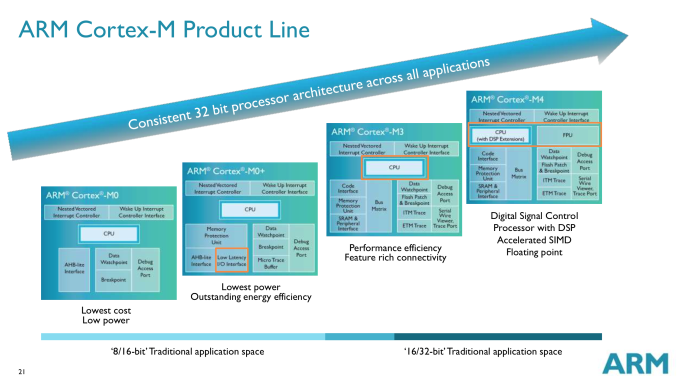
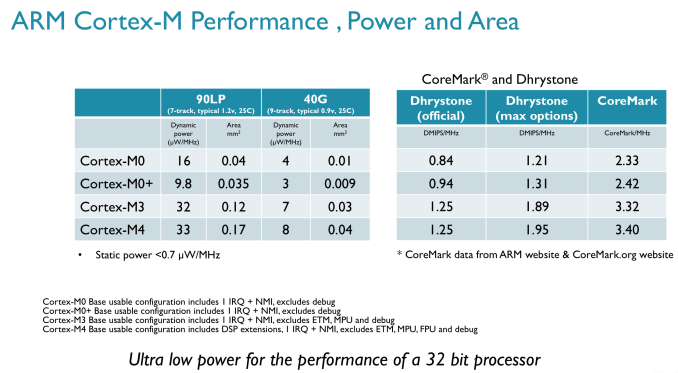

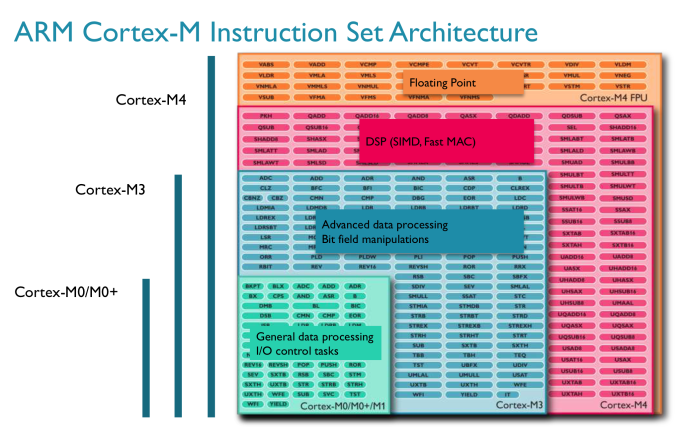

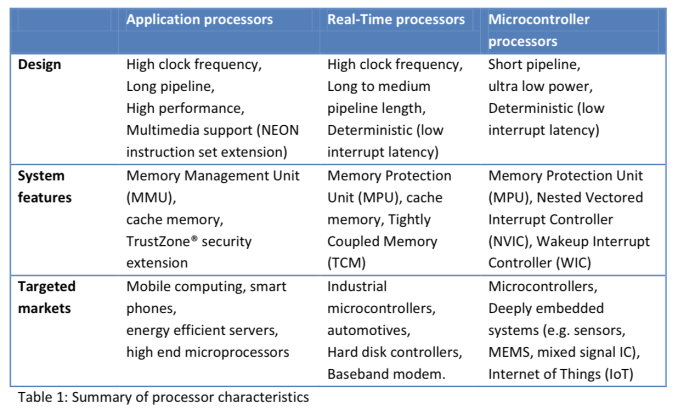
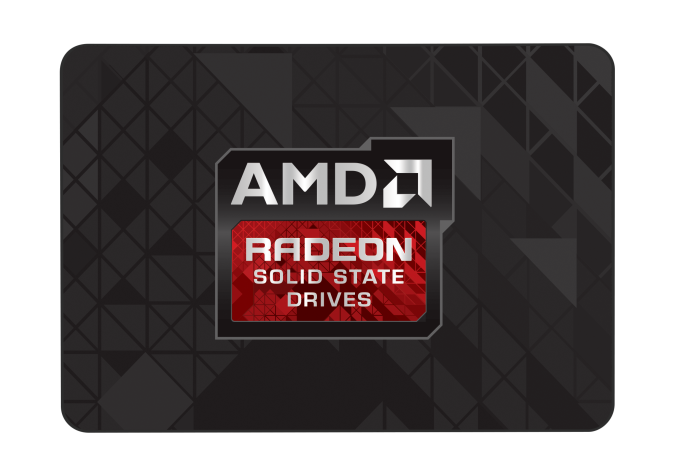
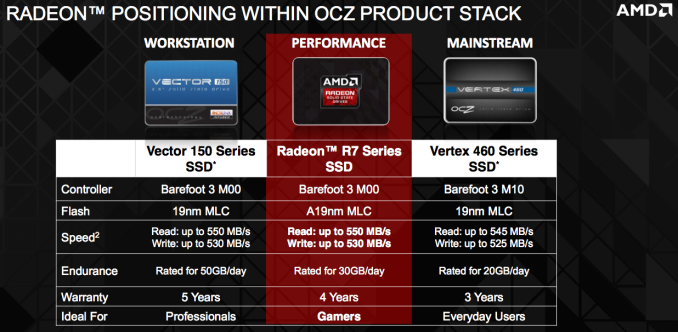



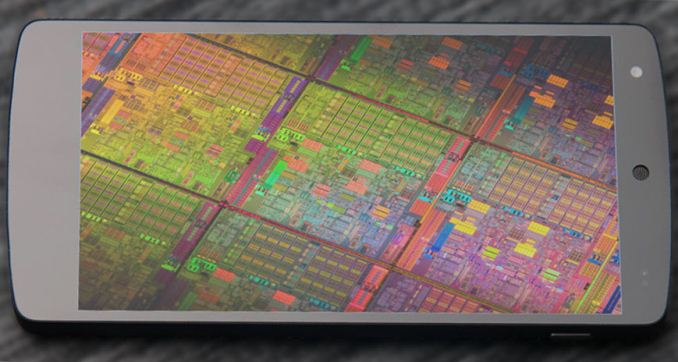
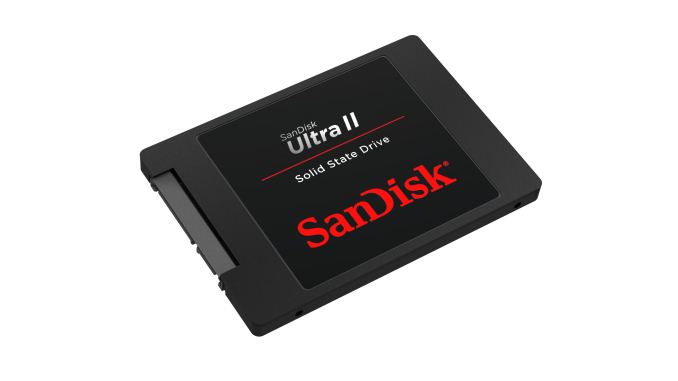
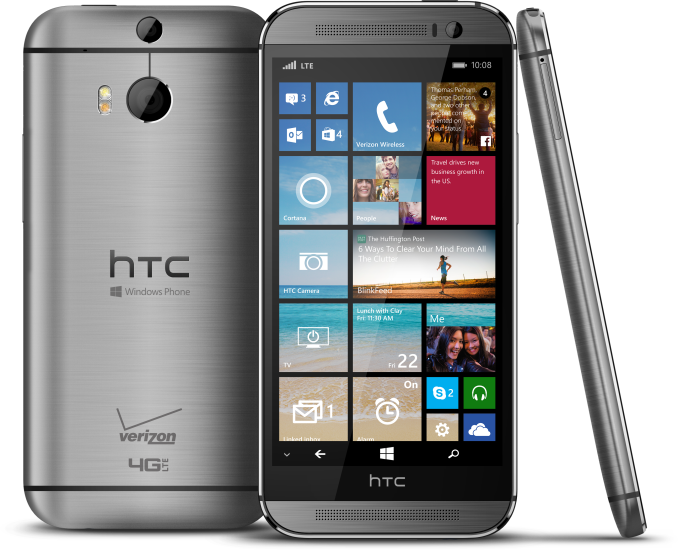
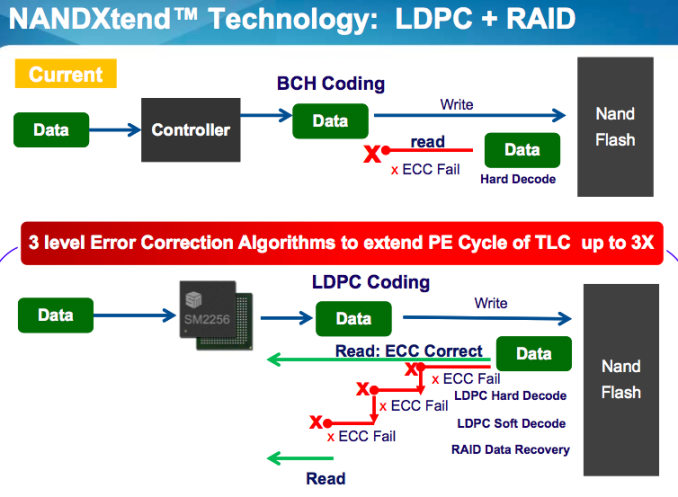
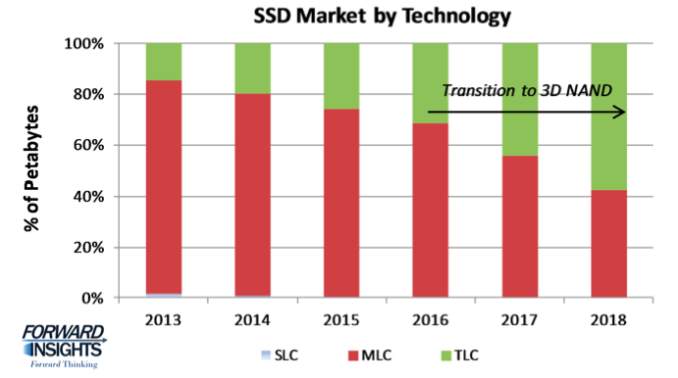
















Bookmarks